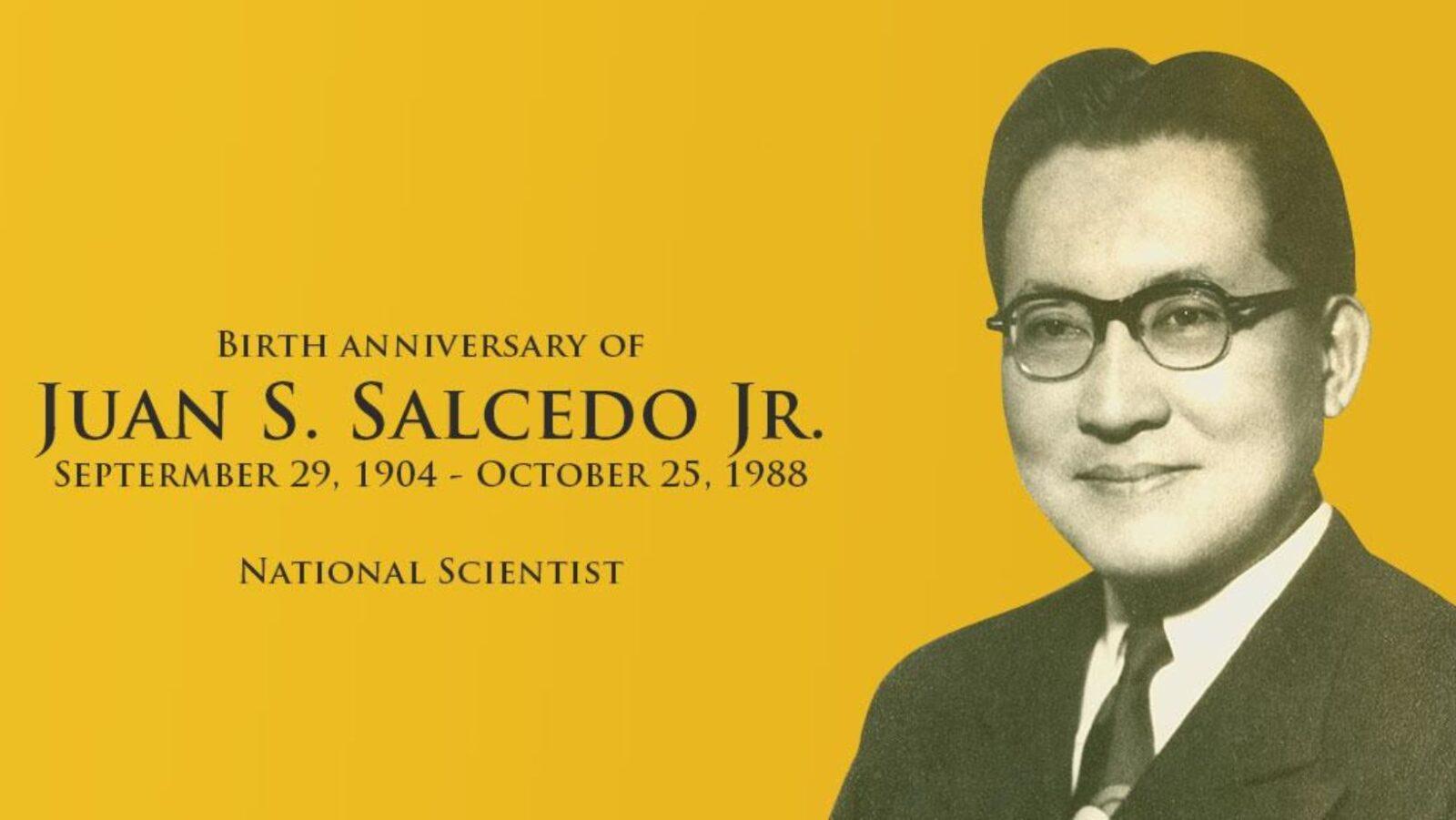•Born on February 4, 1916, Dr. Jose R. Velasco was a pioneer in rice and coconut research in the Philippines.
•Dr. Velasco’s research on rice photoperiodism and weeds paved the way for better planting strategies and weed control.
•He also played a vital role in understanding cadang-cadang, a disease that has killed millions of coconut palms since its discovery.
(Updated on February 4, 2020) Contrary to what some may believe, science isn’t always about finding the right answers. In fact — perhaps more often than we may realize — it’s about weeding out the wrong ones.
When Dr. Jose R. Velasco began his research on a mysterious coconut disease, he was fueled by healthy skepticism about a disease that has killed roughly a million coconut palms each year since its discovery.
And while we now know the true cause of the disease, Dr. Velasco’s findings and methods nevertheless proved to be invaluable to the Pinoy scientific community.
A star on the “rice”
Born in Imus, Cavite on February 4, 1916, Dr. Velasco’s journey in the academe was far from smooth.
He allegedly transferred to the institution we now know as Central Luzon State University Science High School because his stint in a vocational high school didn’t quite work out as planned. Initially wanting to pursue a career in law, he eventually realized that he may not be as well-suited for the profession as he had hoped.
Admirably, he took it in stride; as he himself put it, “Law’s loss was science’s gain.”
After graduating salutatorian, Dr. Velasco was admitted to the University of the Philippines (UP) College of Agriculture in Los Baños, where he specialized in Agriculture Chemistry. There, he finished at the top of his class in 1940, after which he joined the UP faculty.
His challenges weren’t over, though. In the early 1940s, World War II caused brief interruptions in his academic career. After the war, he obtained his doctorate in plant physiology at the University of California, Berkeley as a state scholar.
Upon his return to Los Baños in 1949, he rejoined the UP faculty. He held teaching stints in both Los Baños and Quezon City for more than a decade, as well as leadership positions within the academe. He left in 1967 to be the Commissioner of the National Institute of Science and Technology (now known as the Industrial Technology Development Institute) for the next ten years of his life.

Weeding out the problem
Among Dr. Velasco’s most significant contributions to local agricultural science were his pioneering findings on rice photoperiodism.
In a nutshell, photoperiodism refers to the way a plant or animal responds to seasonal shifts in the lengths of days or nights. In the case of plants, it may also pertain to how they react to periods of light or darkness.
Dr. Velasco began his research on the photoperiodism of rice—undoubtedly the Philippines’ most significant crop—as World War II raged on. His findings (which were published after the war) involved tests on 46 varieties of rice, designed to gauge how they responded to different lighting periods.
Aside from that, Dr. Velasco also pioneered the study of weed science as an academic discipline in 1954. This allowed for significant breakthroughs in weed control methods, particularly in upland rice.
“[Dr. Velasco’s research] contributed [to our] knowledge to advance technology in the cultivation of crops, particularly in rice and coconut,” shared Dr. Arcelia Alejar, a retired professor at from UPLB. Dr. Alejar started working with Dr. Velasco on plant and soil analysis in June 1958, a little over a month after she graduated.
Using his coconut
Dr. Velasco is also well-known for his research on everyone’s favorite “delicious nut [that] is not a nut”: the coconut.
The scope of Dr. Velasco’s coconut research included coconut products and the mineral composition of soil in areas where coconuts grow. However, he is perhaps best known for focusing on a disease that is to coconuts what the Southern corn leaf blight was to maize: cadang-cadang, after the Bicolano word for “dying.”
Contrary to the popular notion at the time that cadang-cadang was viral in nature, Dr. Velasco felt that the key was right under his feet — literally.
Dr. Restie Robles, a retired professor from UPLB who currently evaluates herbicide use for the Department of Agriculture, served as Dr. Velasco’s research assistant in 1962 with the endorsement of her undergraduate thesis adviser, Dr. Augusto Tenmatay. Part of her work involved analyzing soil samples from areas in the Bicol region infested with cadang-cadang. They were searching for a toxic element in the soil that could have caused the disease in the coconuts.
“His work then dealt with finding the cause of the cadang-cadang disease,” shared Dr. Robles. “He was led to the idea that very rare elements in the Periodic Table might be the culprit.”
Eventually, thanks to developments in technology, the etiology (cause) of cadang-cadang was identified as a viroid called CCCVd (coconut cadang-cadang viroid). Found only in plants, viroids are the smallest known pathogens, spreading primarily through human plant propagation methods.
Firmly planted in his work
It was in 1998 when Dr. Velasco joined the ranks of the country’s National Scientists — an honor awarded to him for his extensive work in agricultural research.
“I learned a great deal [from Dr. Velasco] — not only academically, but also the dedication and love to research which I think he instills in all of us,” shared Dr. Alejar. She added that Dr. Velasco loved to write about social and civic scenarios, and that some of his written works were actually published.
Dr. Robles described Dr. Velasco as a “superbly intelligent” man who loved to read. “Working with him gave me so much confidence and security.”
Despite being a strict disciplinarian in the workplace (“At the sound of his swivel chair, everyone became alert,” quipped Dr. Robles), Dr. Velasco showed genuine concern and care for his colleagues, and let his warmth shine through during holidays and special occasions.
Dr. Velasco passed away on January 24, 2007, but his legacy lives on: in books, in journals, and especially in the humble coconut.
Cover photo: Karsten Moran/New York Times; Pexels; Presidential Museum and Library PH (2010-2016)
References
- Ongkiko, Ila Virginia C. (n.d.) National Scientists of the Philippines (1978-1998). Taguig, Philippines. Anvil Publishing, Inc.
- Tecson-Mendoza, E. (2017) Biosketches: Filipino Trailblazers in Science and Technology. Taguig, Philippines. National Academy of Science and Technology Philippines.
- Torrevillas, D. (2007, January 30) Requiem for plant physiologist. Retrieved from https://www.philstar.com/opinion/2007/01/30/382483/requiem-plant-physiologist.
- https://www.sciencedirect.com/topics/neuroscience/viroids
- http://www.pca.da.gov.ph/pdf/techno/cadangcadang.pdf
Author: Mikael Angelo Francisco
Bitten by the science writing bug, Mikael has years of writing and editorial experience under his belt. As the editor-in-chief of FlipScience, Mikael has sworn to help make science more fun and interesting for geeky readers and casual audiences alike.







